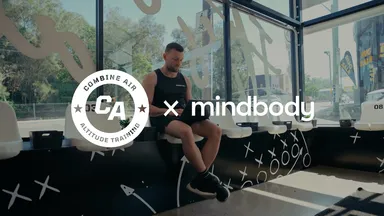
How to Use Dynamic Pricing to Increase Revenue at Your Fitness Business
Last updated: January 25, 2024
In this new world of reduced capacity, every spot matters more. And with expenses the same, if not higher (due to increased spending on cleaning supplies, personal protective equipment, and more), fitness businesses need to make the most of every class and client. With Dynamic Pricing, it's easy to do just that.
Maybe you've used Dynamic Pricing to fill slots in your less popular classes with discounts. But did you know you can use it to earn more for each spot in your high-demand classes, too?
Accounting for factors like past attendance, time of day and day of the week, Dynamic Pricing automatically adjusts class prices to meet real-time demand. In the case of reduced class capacity, because supply is low and demand is high, prices automatically go up.
The best part is, you have complete control over the types of classes, the number of spots available, and the price range. Plus, you can update settings and adjust pricing anytime.
Ready to get started? Here are five steps to Dynamic Pricing success in the wake of COVID-19.
1. Choose the right classes
Start by looking at your current class offering. Are you providing a hybrid schedule, including both in-person and virtual fitness classes? Your limited, in-person classes are probably in high-demand right now (fewer spots = higher demand). Your virtual classes, on the other hand, likely have unlimited capacity and could benefit from increased attendance. Make the most of each with Dynamic Pricing.
For limited, in-studio classes, the benefits of Dynamic Pricing are twofold. As class time approaches and availability decreases, prices go up—earning more revenue for each spot. Dynamic Pricing also incentivizes consumers to book early when demand and prices are lower, giving you (and your instructors) more foresight into attendance.
For virtual fitness classes, Dynamic Pricing works to incentivize attendance by lowering prices if sign-ups wane. These classes will also be featured on the Mindbody app as "Last Minute Deals", making them more visible to new consumers.
Tip: The more classes and spots you price dynamically, the better the algorithm works and the more you're able to maximize your revenue. We recommend offering between 30% to 75% of your class schedule.
2. Choose an ideal price range
You can set your minimum and maximum as low and high as you like for each class, keeping in mind your existing brand and regular customers.
If you're not sure where to start, consider setting your minimum, discounted price 50% less than your regular drop-in and your maximum price 30-35% higher than your drop-in.
Your in-studio and virtual prices may differ but for simplicity's sake, we'll keep them the same in the example below.
If your virtual or in-studio drop-in is £20, your Dynamic Pricing range could be:
- Minimum: £20 x 0.5 = £10
- Maximum: (£20 x 0.35 = £7) + £20 = £27
3. Save space for your members
Set up Dynamic Pricing in a way that complements class attendance, while still honouring your existing customers. Design your Dynamic Pricing settings in a way that assigns the greatest value to memberships.
As things get back to normal, your dynamically priced classes can be used as a tool to fill open spots in your studio and attract new customers who have the potential to turn into members over time.
Tip: If you choose to dynamically price your entire schedule, you can exclude member-only classes by disabling Dynamic Pricing on a class-by-class basis. You can also exclude a service category associated with member classes.
4. Keep payroll in mind
Your payroll is an important aspect to keep in mind any time you adjust pricing strategy. Consider how it might be affected by increased class attendance. For example, if you pay your instructors per attendee, your payroll will also increase. Consider changing pay rates on the Dynamic Pricing Option range to alleviate added expenses resulting from increased attendance.
5. Track your progress
Aim to evaluate your performance at the end of each week, compared to the previous week's attendance and revenue. If you're not seeing results after the first month, try adjusting your Dynamic Pricing settings. Be strategic about what you offer and keep tabs on what's working—and what's not. Modify and adjust until you find what works for you.
Tip: Track improvements in class attendance (Attendance Analysis and Attendance with Revenue), capacity (Classes tab) and revenue (Sales by Category). Make adjustments to your dynamic prices based on the results.



